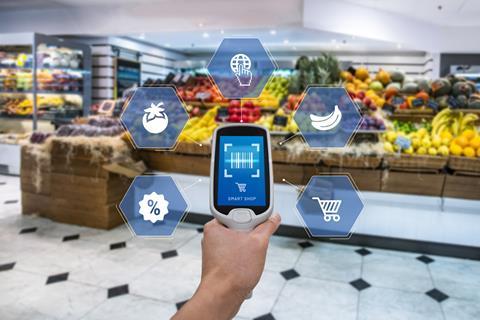
Stocking the shelves for Christmas is a perennial challenge for supermarkets. This year’s winners are likely to be those who are most progressive when it comes to leveraging AI-enabled systems and other advanced technologies.
Most supermarkets already use AI systems to design planograms and displays, based on how people move through the store, what they see and what they buy. Most will also use algorithms, trained largely on historical demand data, to identify trends and predict stockouts.
However, many of these systems still require some form of human intervention. As such, the benefits of fully integrated AI systems and other advanced technologies are yet to be realised.
For some smaller chains, there could be an opportunity to differentiatecustomer experience and drive sales through the early adoption of AI systems and other advanced technologies. Advanced chatbots, fuelled by AI, could unlock opportunities to get closer to customers and increase personalisation, resulting in a better customer experience. Generative AI can also be used for data analytics and optimising pricing strategies.
Here are five ways embracing AI and advanced technologies could boost festive trading performance:
1. More accurate demand forecasts
Is your festive data giving you an accurate, real-time picture of how much product is being sold, how much is being held, and what factors could influence demand for certain products in the weeks ahead? AI systems trained on high-quality demand data can help retailers optimise their trading performances based on a variety of forecasting models.
2. Rethinking replenishment
Advanced technologies can streamline replenishment and mitigate the risk of out of stocks. Using augmented reality eyewear to help shopworkers capture on-shelf availability, and deploying pick and place robots to support rapid replenishment, could boost sales significantly and avoid disappointing customers looking for a particular product.
3. Minimising waste
AI-powered tools can spot trends and predict demand levels with greater accuracy, helping supermarkets to get the right-sized inventory. This minimises waste, and also means there is more space to stock bestselling product lines.
4. Engaging suppliers and sharing data
Supermarkets need to look beyond their own operations and find opportunities to improve efficiency across the end-to-end supply chain. By sharing AI-powered demand forecasts and working collaboratively with suppliers, there is greater opportunity to spread the load in demand pressures whilst securing critical supply lines.
5. Dynamic decision making
Retail sales of food and alcoholic drinks tend to surge by 20% and 38% respectively in the month of December. This makes dynamic pricing and discounting strategies even more important. Using accurate, real-time data to build bespoke decision-making models could help businesses set the right pricing levels – and indicate when is the right time to start discounting stock.



















No comments yet